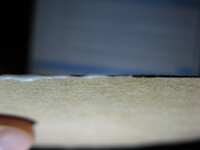Hello everyone,
My classmates and I have been assigned a project in which we are designing a miniature roller coaster as an interactive and engaging way to deepen our understanding of physics concepts while developing our critical thinking and hands-on skills.
Our physics teacher has provided us with a set of specific design parameters (outlined below), and we are seeking any advice or tips you might have on how to construct our roller coaster to achieve the maximum possible exit velocity while still meeting all the given requirements.
Any guidance or suggestions would be greatly appreciated. If you have any questions or need further details about the project, please feel free to ask. Thank you in advance for your support!
Design Criteria:
The scaled construction of your design is required to test your model roller coaster. The following design criteria must be followed to be considered:
My classmates and I have been assigned a project in which we are designing a miniature roller coaster as an interactive and engaging way to deepen our understanding of physics concepts while developing our critical thinking and hands-on skills.
Our physics teacher has provided us with a set of specific design parameters (outlined below), and we are seeking any advice or tips you might have on how to construct our roller coaster to achieve the maximum possible exit velocity while still meeting all the given requirements.
Any guidance or suggestions would be greatly appreciated. If you have any questions or need further details about the project, please feel free to ask. Thank you in advance for your support!
Design Criteria:
The scaled construction of your design is required to test your model roller coaster. The following design criteria must be followed to be considered:
- Create a scaled roller coaster that is self-standing.
- You can only use “tree-based” materials for this project; i.e., no metals or plastics.
- You cannot use pre-purchased building kits (i.e., LEGO, K-NEX, etc.).
- A marble, representing the roller coaster, will be provided on the testing day.
- The roller coaster must contain, at a minimum, one (1) initial hill and one (1) vertical loop.
- The initial hill cannot be larger than 0.7 m tall.
- The base of the roller coaster cannot have an area of greater than 0.3 m².
- To have the provided marble reach the end of the track and obtain the greatest final exit velocity
- To verify the Law of Conservation of Energy.
- To demonstrate a knowledge of vectors, velocity, displacement, forces, energy, and other concepts learnt throughout the duration of the course.

